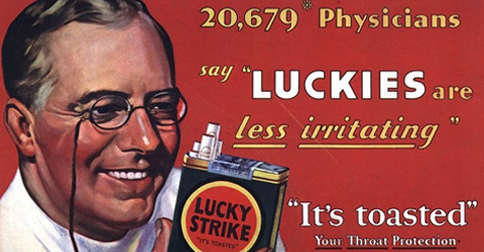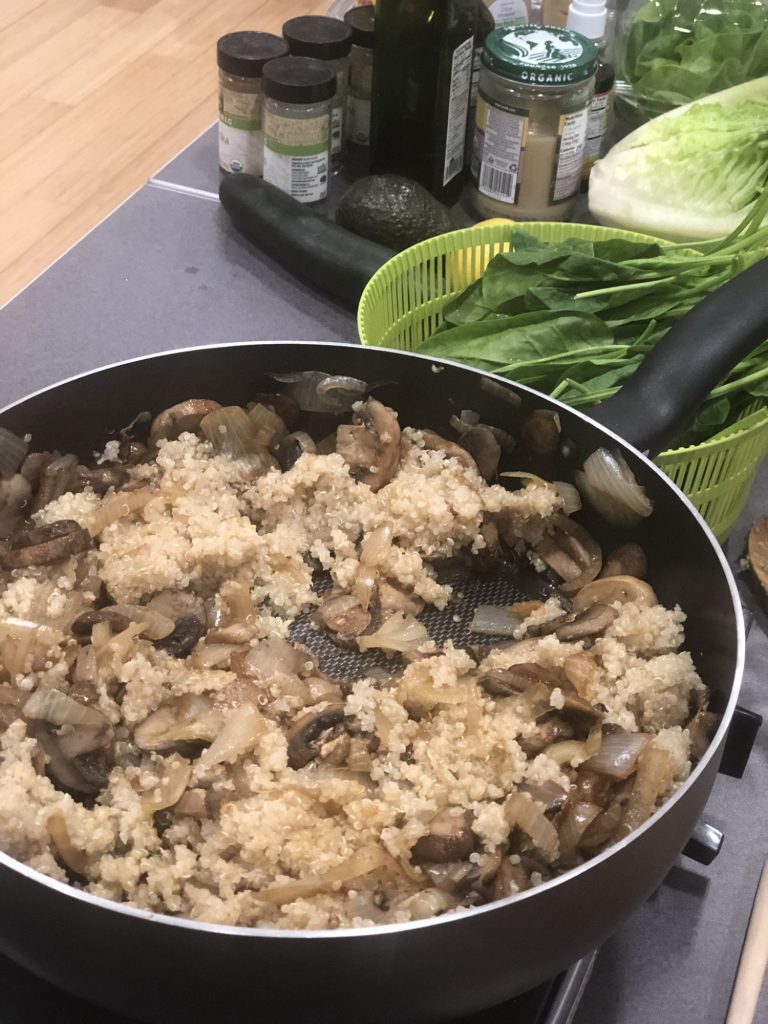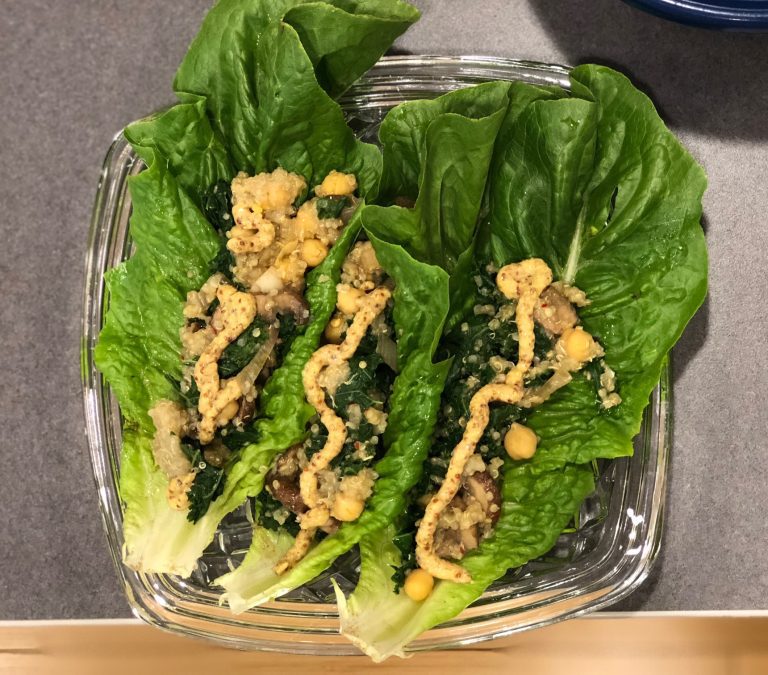If You’re Confused About What to Eat, That’s by Design
By Michael Dangovian
March 14, 2017
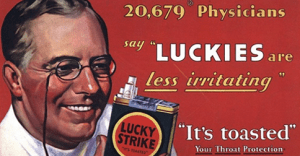
Stores are full of products claiming to be “low fat,” “no added sugar,” or “made with whole grains.” Confusing, right? Sadly, that confusion is NOT an accident…
In 1919, half of every paycheck went toward buying food.
Today that percentage is 6%.
If you’re asking why it was so expensive back then, you’re not asking the right question. Instead, the question is, why is it so cheap now?
Obviously there’s a number of factors—the urbanization of America in the early twentieth century, the rise of the American industrial food complex post WWII, a culture of ever busier and hectic lives that generally opts for convenience over basic nutrition, and a hundred other things that are too long to list here.
But, just look at that difference! Half your paycheck, if you were living and working just after WWI, would go towards groceries. Not that 6% of your paycheck is anything to sniff at, but that’s a huge difference.
And it’s not because we’re eating less. Not by a long shot. But because food can be mass produced cheaply and spend months (or years!) in storage before it even gets to the grocery shelves, the savings, for what it’s worth, gets passed along to the end buyer.
Namely, you.
Which is good, in a way. Spending less money to eat is, in and of itself, a good thing.
What’s not good, though, is what we’re spending instead of money for our food. Stuff always costs the same amount.
The difference between societies throughout time is what’s being spent.
So, how are we making up the difference between 6% and 50%?
We’re offering blind faith combined with utter confusion as payment.
Before I get into why we’re in the mess we’re in, let me first say this very clearly: It’s not your fault. The blame lies entirely elsewhere. Read a label on any foodstuff you might have at hand, and your eyes are going to glaze over trying to understand what the words mean.
And that’s by design.
Everything the big food companies (with a little help from government regulators) have done over the last 30 years had one aim: Sell you “food” while distancing you from what REAL FOOD actually is.
Unfortunately, they’ve been wildly successful.
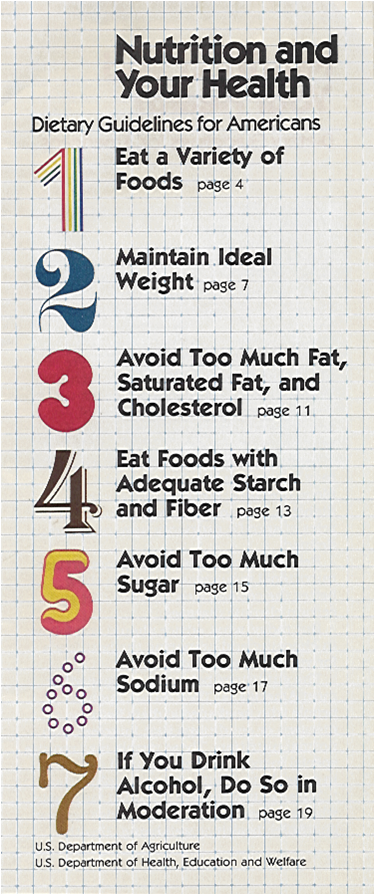
So Where Did This Mess Come From?
You can point to a lot of things in the 20th century that led up to where we are health-wise as a country right now.
But probably the biggest turn came in 1980.
Eating healthy isn’t a new thing. Americans had for generations tried to eat healthy. But what happened in 1980 shifted our attitudes about food, the full force of which we’re feeling today.
That was the year that the US Departments of Agriculture and health and Human Services pushed out the very first Dietary Guidelines for Americans, which were:
1. Eat a Variety of Foods
2. Maintain Ideal Weight
3. Avoid Too Much Fat, Saturated Fat and Cholesterol
4. Eat Food with Adequate Starch and Fiber
5. Avoid Too Much Sugar
6. Avoid Too Much Sodium
7. If You Drink Alcohol, Do So in Moderation
All of which sound pretty good, right?
The problem, though, is that the effect it had was to make us stop looking at the actual food we are eating and instead focus on the ingredients inside the food.
That may sound a little nit-picky, but the difference is profound.
Instead of eating an apple, you are now focused on how much sugar is in the apple, how much fiber, protein, complex carbs, simple carbs, vitamins, and a whole host of other nutrients.
Which, again, in and of itself isn’t terrible. But it shifted our focus.
Which allowed the real problems to sweep in. And we welcomed them with open arms.
Marketing
Once our focus had shifted from what real foods to eat to what nutrient/fat/sugar/salt amounts we were consuming each day, it became very easy for big food companies to market their terrible, processed food to us as “slightly less terrible.”
Sugar free, low fat, “diet”…. all these words don’t have a thing to do with actual food. They instead have everything to do with marketing.
They also have a lot to do with chemicals put into the processed garbage to replace what is left of the natural fats, sugars, and other things the processing might remove.
This is why our food is so cheap.

This is also why we’re so fat.
The thing is, though, that all of this “health-ifying” of processed food might not have induced an epidemic of obesity and disease if people had just blindly come across it in supermarket aisles. But the food companies made sure that that wasn’t an issue.
I don’t have to tell you much you are marketed to. Or your children. Or your grandchildren. It’s everywhere. And although we can tell ourselves that we’re ignoring it, that just isn’t how our brain works. All of it is coordinated so that the message hits us right where it’s supposed to in our brains. It hits us on a “factual” level. It plays with our emotions. And above all, it’s a constant stream.
We don’t know what to eat because companies are paying billions and billions a year to make sure that we’re confused.
And part of that confusion has a lot to do with a severe lack of health regulation. Pop is the cigarette of this century. The high fructose corn syrup and other chemicals in it are literally deadly. Given the damage it does, it ought to require an 18+ ID to buy it, right along with cigarettes. That doesn’t seem likely given that it took 7,000 medical studies for it to become clear to the public (and the government, apparently) that cigarette smoking is bad.
It’s so confusing, in fact, that even when you’re trying to be healthy it’s still a crapshoot. Naked smoothies, for instance, started out as an independent company, trying to make healthy drinks. Then they were bought out by Pepsico. Now, the sugar content in one bottle is equal to or more than a can of pop.
It’s depressing.
So What’s the Answer?
I have a lot of faith in people. I truly believe that our culture will wake up one day and the whole processed food fiasco will be behind us.
But until then, the responsibility for our health is up to each of us. We can continue to just mindlessly stuff our faces with whatever commercial on TV or online is telling us to at any given second.
Or, we can take charge of our health and our futures and start working on our relationship with food. Right now, most of us have an unnatural relationship with it. But if we see it as life giving, wholesome, and whole, a lot of our health problems just seem to disappear. It’s not magic, but sometimes it feels that way.
The key is to start slow. Start adding whole foods to what you’re already eating. Pay attention to what you’re eating. Enjoy each bite. Find a support system. Heck, find a health/nutrition coach. Educate yourself.
But what you can’t do is nothing.
Life is way too great to let it just pass by. While the TV is on, the big food companies have you right where they want you.
Want more great health resources? Awesome. Watch this:

